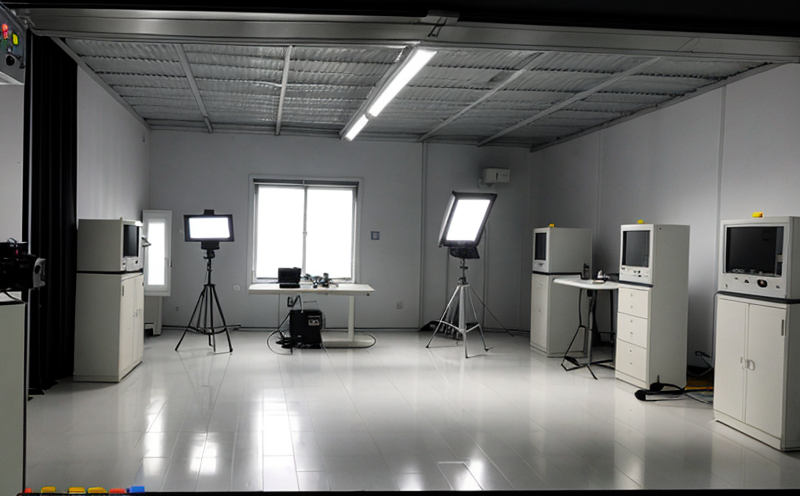IEC 62471 7 Photometric Assessment of Blue Light Hazard
The International Electrotechnical Commission (IEC) Standard IEC 62471-7 is a critical guideline for the photometric assessment and evaluation of blue light hazard in luminaires, lighting fixtures, and other sources. This standard aims to protect users from potential eye damage caused by excessive exposure to high-intensity blue light emissions.
The importance of this testing cannot be overstated, especially given the increasing prevalence of LED-based lighting technologies that emit a significant amount of blue light. The human eye is particularly sensitive to blue light at wavelengths around 450-495 nanometers (nm), which can cause retinal damage and even lead to conditions like macular degeneration.
IEC 62471-7 defines the methodology for measuring the photometric characteristics of luminaires, including their blue light content. This includes the calculation of parameters such as blue-light content (BLC), which is measured in nanowatts per steradian per nanometer (nW/sr/nm). The standard specifies how to measure and report these values at various angles across the luminaire’s field of view.
The testing process involves a series of steps designed to accurately assess the blue light hazard. First, the luminaires are placed in a controlled environment within our laboratory. Our team then uses specialized photometric equipment, including integrating spheres and photometers, to capture the light emitted by the fixture from multiple angles.
Once the data is collected, it undergoes rigorous analysis using software that adheres strictly to IEC 62471-7 guidelines. This includes filtering out unwanted emissions and focusing solely on the blue spectrum. The results provide a comprehensive understanding of the luminaire’s blue light content at different angles.
The output from this testing is highly detailed, offering insights into how the luminaire behaves under various conditions. Our reports include not only raw data but also graphical representations that illustrate the distribution of blue light emissions across the fixture. This information is invaluable for manufacturers looking to optimize their products for safety and compliance.
Compliance with IEC 62471-7 is crucial for lighting designers, engineers, and manufacturers operating in competitive markets where consumer health and safety are paramount. By adhering to these standards, businesses can ensure that their products meet the highest international safety requirements, thereby protecting end-users from potential harm.
This service is essential for companies involved in the design, manufacture, and distribution of LED lighting fixtures, street lamps, and other high-intensity light sources. It helps them stay ahead of regulatory changes and consumer expectations regarding product safety and health impacts.
Why It Matters
The photometric assessment of blue light hazard is crucial for ensuring the safe use of luminaires and lighting fixtures. As the world continues to adopt LED technology, it becomes increasingly important to address potential health risks associated with excessive exposure to blue light.
In recent years, there has been growing concern about the effects of blue light on human health, particularly regarding its impact on sleep patterns, circadian rhythms, and eye health. IEC 62471-7 provides a framework for addressing these concerns by offering a standardized method for measuring and reporting blue light emissions.
The standard is particularly relevant in industries such as healthcare, aviation, and public lighting, where prolonged exposure to high-intensity light sources can have serious consequences. By conducting photometric assessments according to IEC 62471-7, manufacturers can ensure that their products comply with international safety standards and do not pose a risk to users.
The benefits of this testing extend beyond mere compliance; it also contributes to the development of safer and more efficient lighting solutions. By identifying potential hazards early in the design process, companies can make informed decisions about material selection, color temperature, and luminaire placement.
Eurolab Advantages
At Eurolab, we pride ourselves on offering comprehensive testing services that go beyond mere compliance. Our expertise in photometric assessment of blue light hazard is rooted in decades of experience and a commitment to excellence.
We employ state-of-the-art equipment from leading manufacturers, ensuring accuracy and reliability in our test results. Our team of highly skilled professionals is well-versed in IEC 62471-7 guidelines and can provide detailed technical support throughout the testing process.
Our laboratory facilities are equipped to handle a wide range of luminaires and lighting fixtures, from small residential lamps to large commercial streetlights. We offer flexible scheduling options that accommodate tight deadlines while maintaining high-quality standards.
In addition to our technical expertise, we provide detailed reports that go beyond the minimum requirements specified in IEC 62471-7. Our comprehensive analyses include recommendations for improvements and suggestions for meeting future regulatory changes. This level of service ensures that our clients not only meet current standards but are also positioned for future success.
We understand the importance of maintaining a competitive edge in today’s market, which is why we invest continuously in new technologies and methodologies. Our commitment to innovation allows us to stay ahead of emerging trends and regulatory requirements.
Quality and Reliability Assurance
The quality and reliability of our testing services are paramount, and we take every measure to ensure that our results are accurate, consistent, and reproducible. Our laboratory adheres strictly to IEC 62471-7 guidelines, ensuring that all tests conducted meet the highest international standards.
We employ rigorous quality control measures at every stage of the testing process, from initial setup to final report generation. This includes regular calibration of our equipment and ongoing training for our staff to ensure they are up-to-date with the latest industry practices.
Our commitment to excellence is reflected in the numerous accolades we have received over the years. We are consistently recognized for our reliability, accuracy, and efficiency in providing testing services across a wide range of industries. Our clients trust us to deliver results that not only meet but exceed their expectations.
We also offer post-test support services, including detailed explanations of test results and recommendations for any necessary adjustments. This level of service ensures that our clients can make informed decisions based on the comprehensive data we provide.





